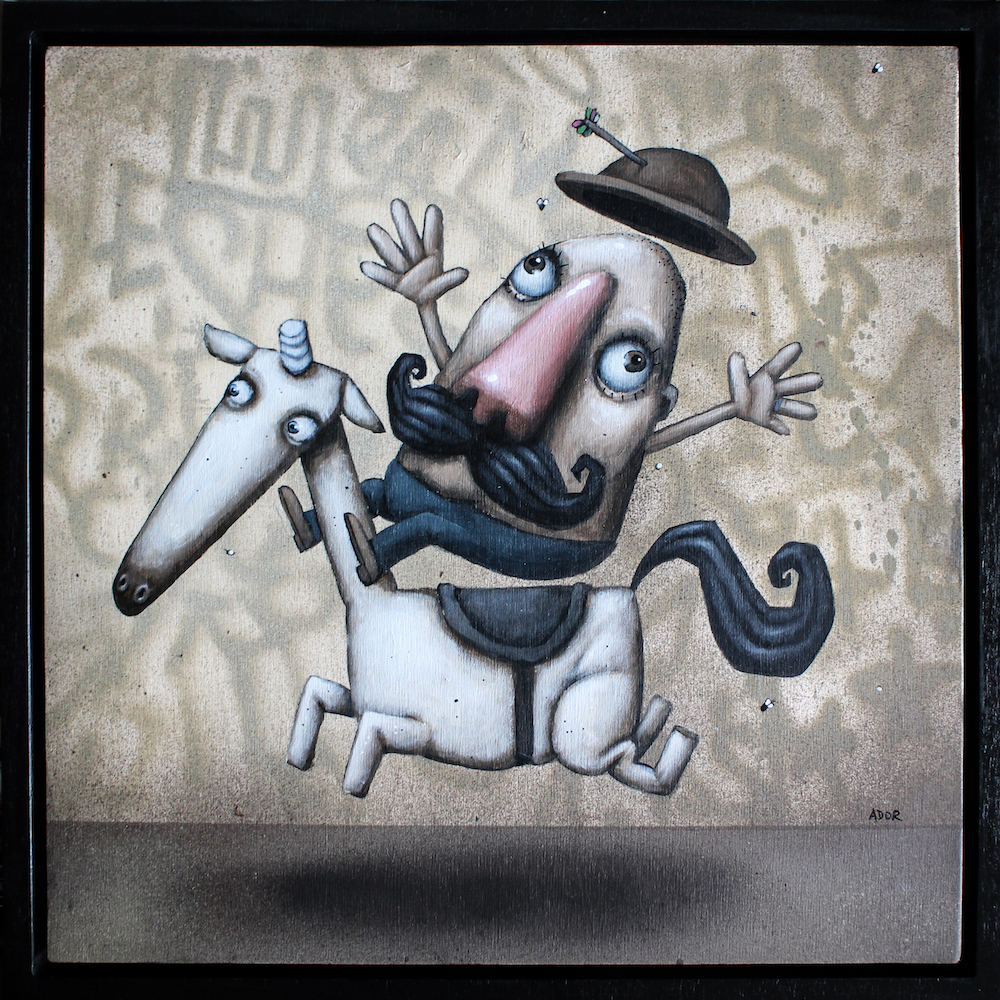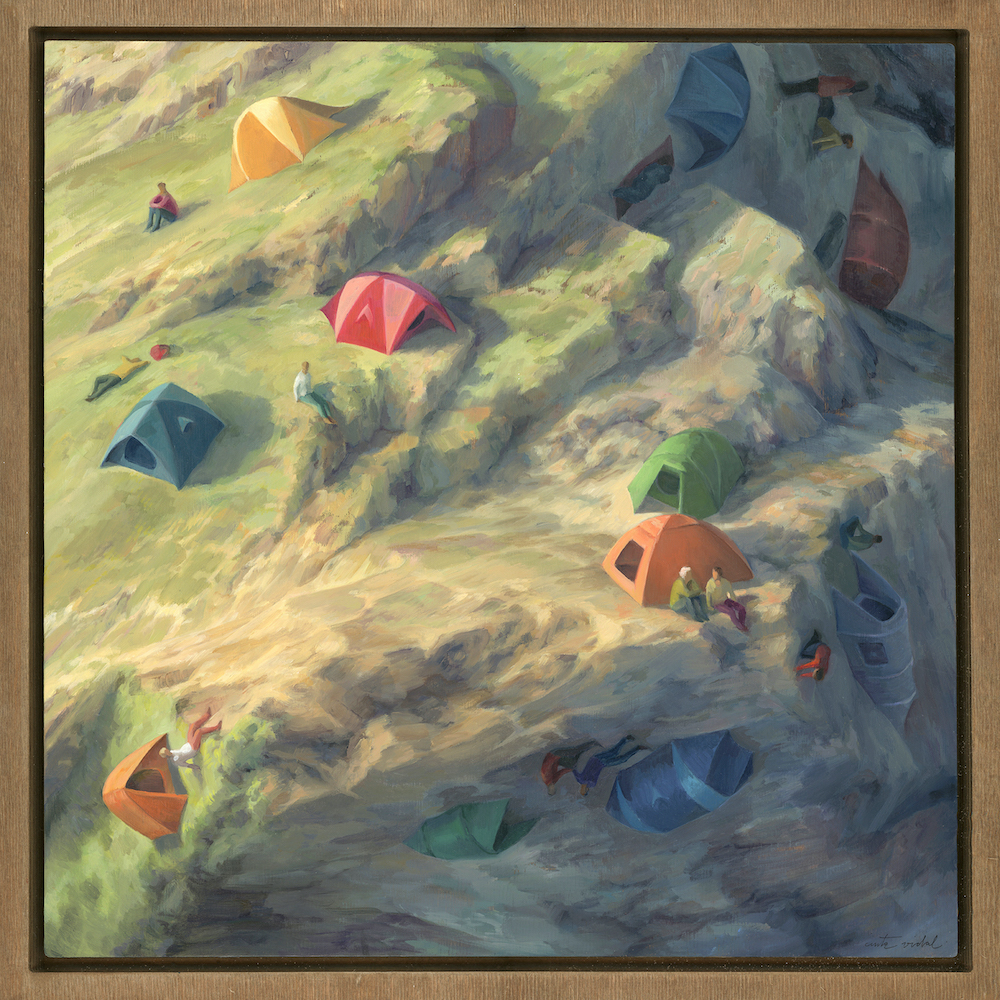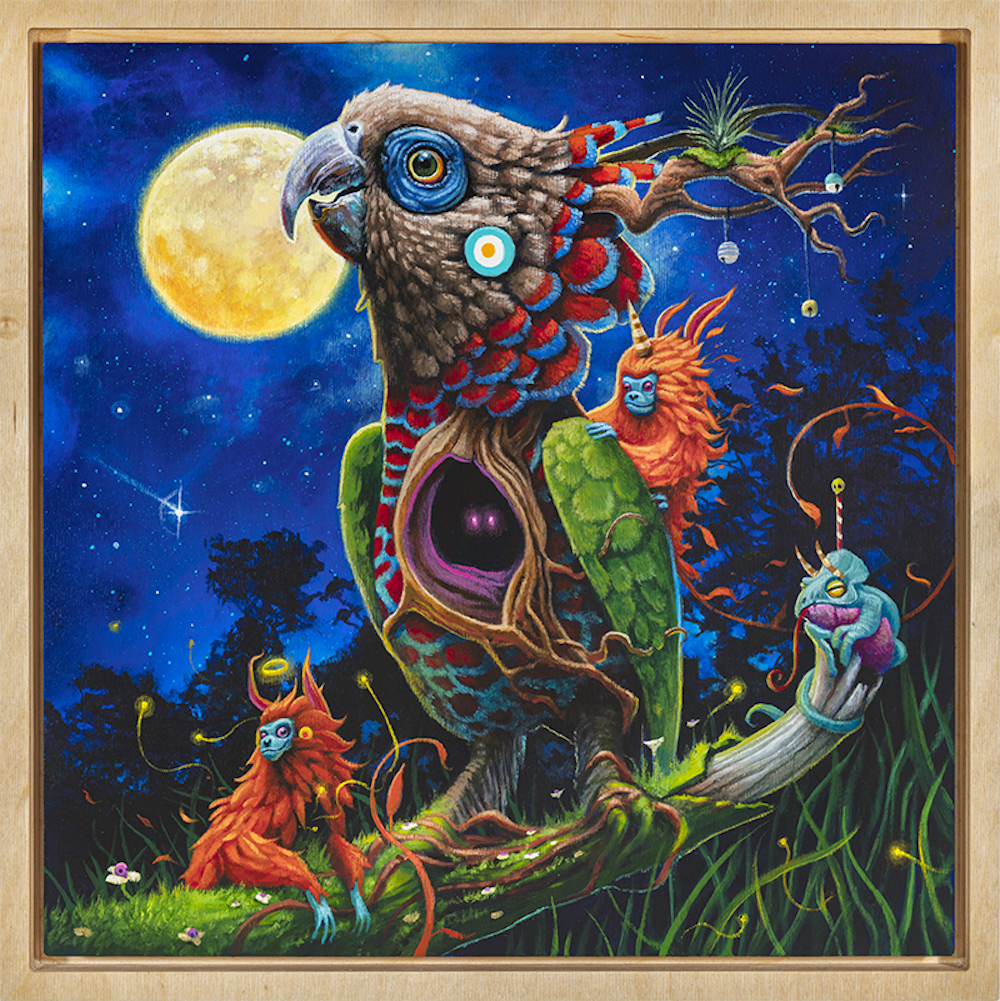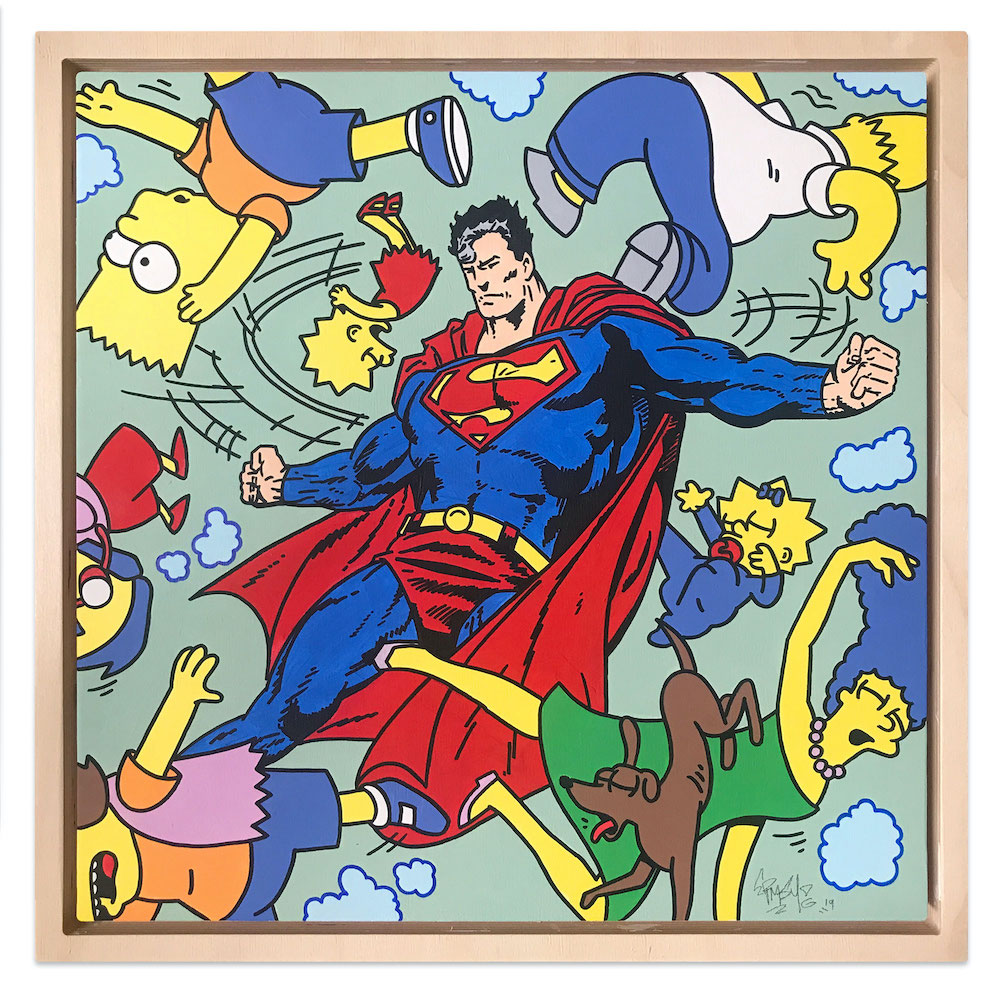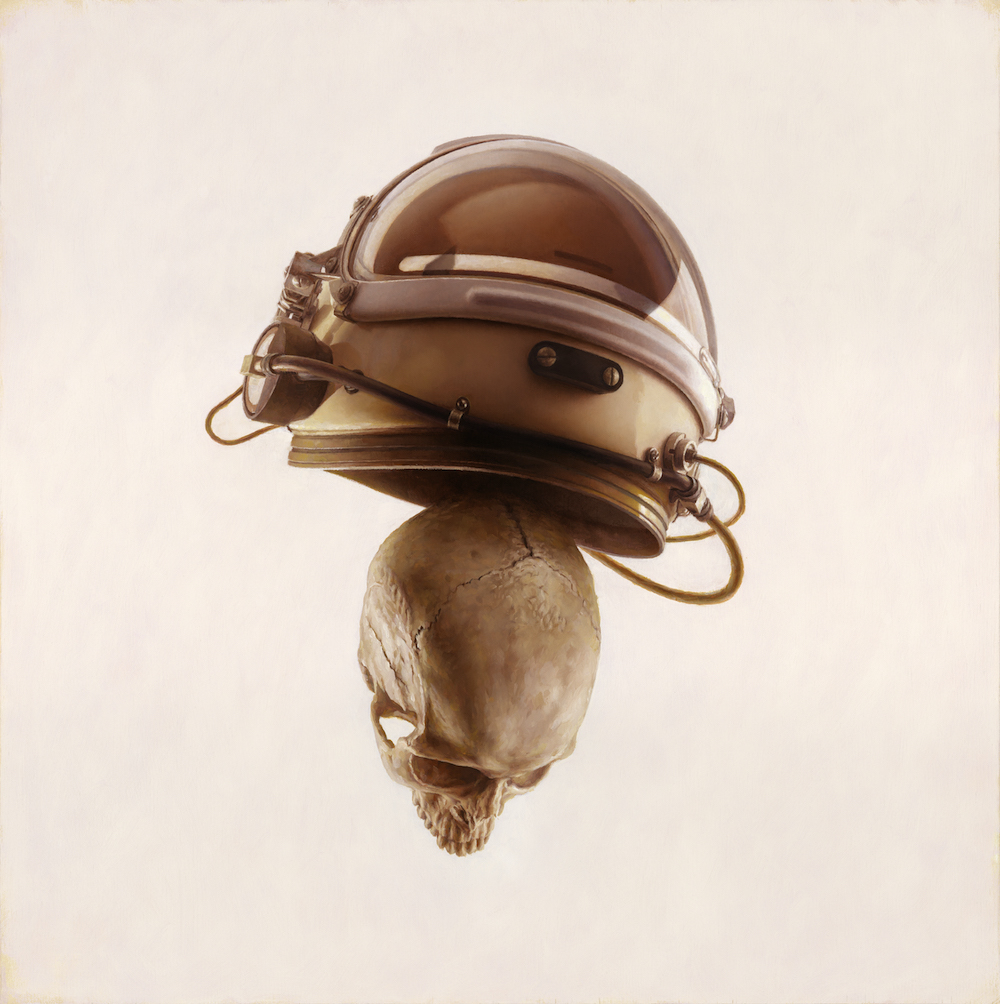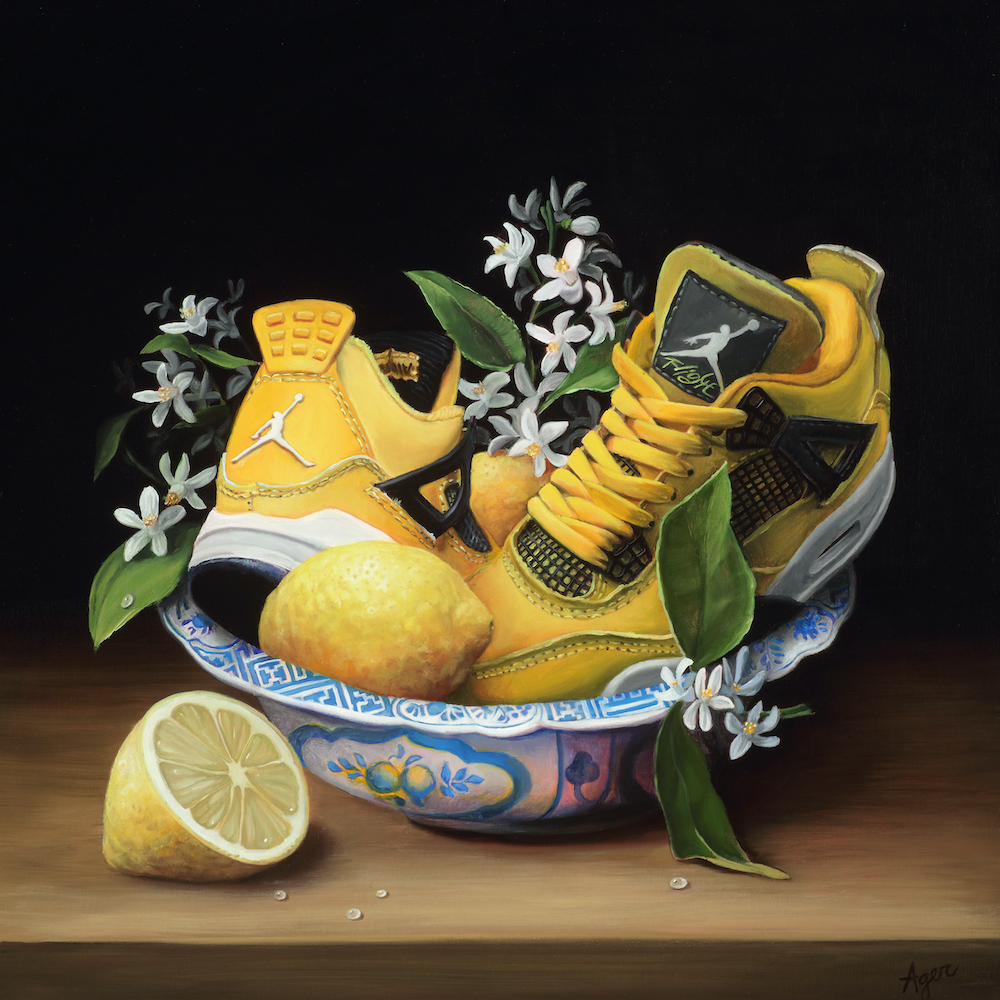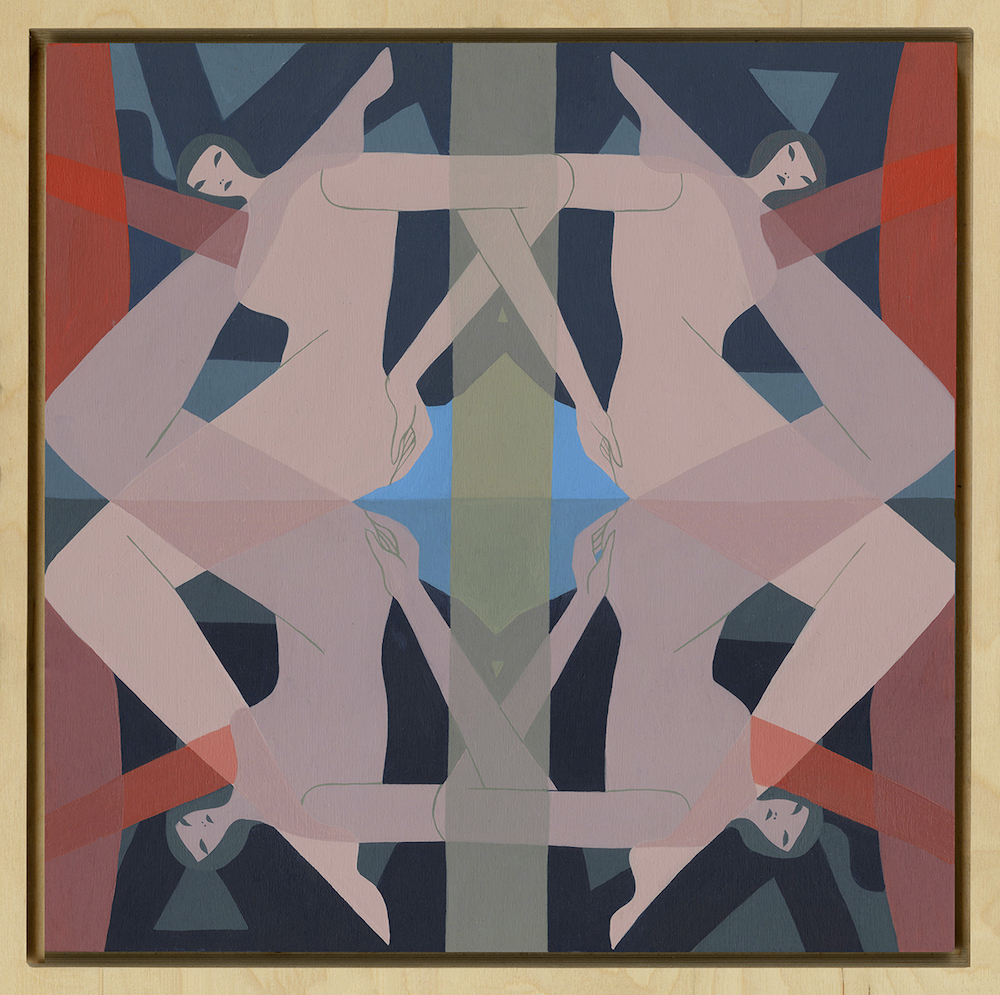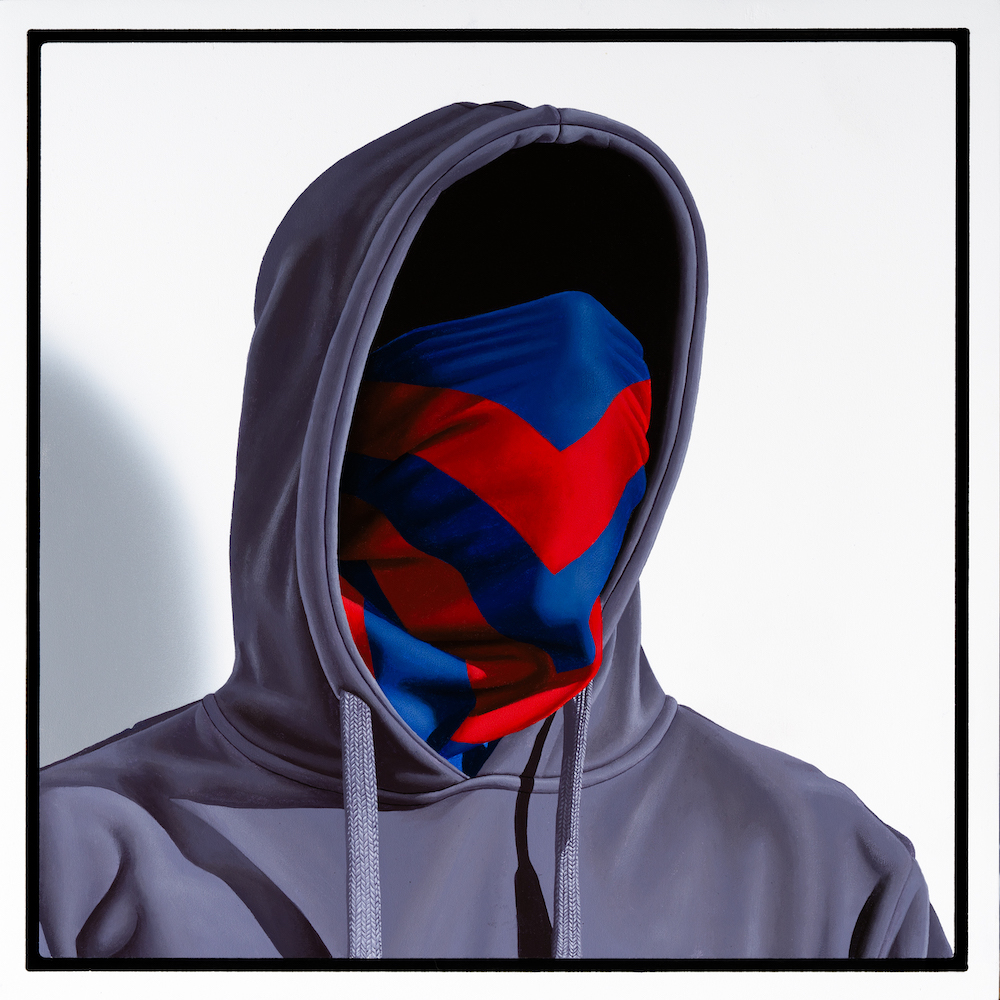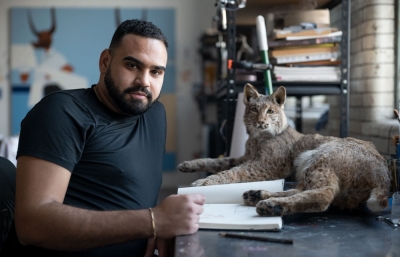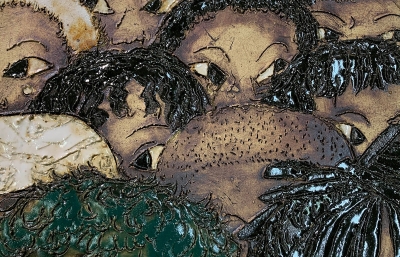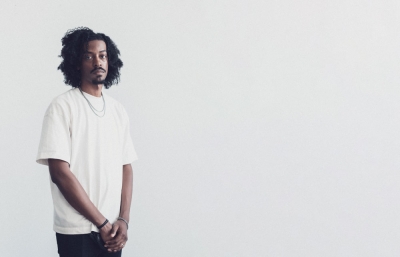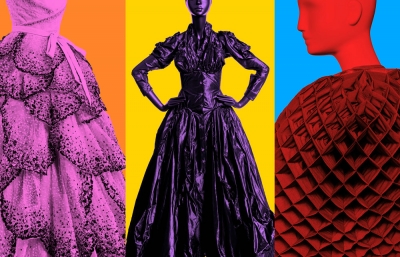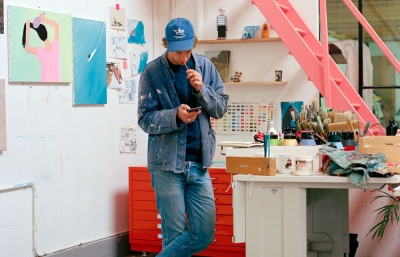Fifteen years in the art world is like an eternity. Movements, scenes, the Next Big Thing, they come and go, not so much like pop sensations in the larger cultural world, but propelled by the unparalleled fluctuating beast that is the art market. That Thinkspace Projects has fostered something rare in the art world since 2005, supporting artists through traditional exhibitions, sales, fairs, museum shows and festivals, as well as fully participating in the culture, is pretty exceptional. They have engaged with street art, New Contemporary and Pop Surrealism, and not idly standing by, waiting for the culture to come to them. On the eve of the 15 Years of Thinkspace exhibition at their Culver City gallery, I sat down with Andrew Hosner for a wide-ranging conversation about how integral Los Angeles is to their identity in organizing landmark shows and pushing museums to understand the importance of emerging art.

Kayla Mahaffey
Evan Pricco: Fifteen years is incredible, and in a world where galleries come and go, it's quite an amazing feat seeing that you came from a more left-field approach, as opposed to a legacy gallery. Do you feel like you’re blazing a bit of a trail for New Contemporary?
Andrew Hosner: It has been pretty wild to look back at the past decade-and-a-half, and how far we’ve come, and how far the New Contemporary movement has come. Back when we started, many were still using the Pop Surrealism tag to describe our bubble of the art world, and as things grew and more galleries came on board, and street art continued to grow globally, it became obvious that a new umbrella term was needed. Though the New Contemporary term is a bit redundant, I’ve seen institutions as prestigious as the Chicago Museum of Contemporary Art use it to describe the past 30 years or so of contemporary art. We’ve flown the flag strongly by including the term as part of all of our traveling shows and tie-ins with the POW! WOW! mural festival, and a couple of major museum exhibitions. Until the history books give it a catchier name, we will embrace the New Contemporary as we feel what we’re doing is much different than those at the blue chip level, who are wrapped up with chasing the next flavor of the moment.

Yosuke Ueno
Do you think your success could have happened anywhere but Los Angeles? I think Los Angeles is vital to the story, and provides a defining backdrop to Thinkspace. Can you talk about Los Angeles's ebbs and flows in the art world, as well as changes in your own Culver City?
Good question, and I could never argue that Los Angeles is not a huge part of our story. We came about by meeting at an underground art event by the name of Cannibal Flower, held monthly in abandoned warehouses in the most off-the-beaten paths of downtown Los Angeles. So many of their early shows were just moments in time that can never be captured again.
Looking back, it was really magical. We’ve really been through the ringer over the years, but have persevered somehow. Our first space was off of the famous Melrose Avenue, and we just happened to befriend the gang over at SURU around the corner, owned by Joe Hahn of Linkin Park fame. He became one of our best clients early on, introducing us to an amazing client base… that definitely would not have happened anywhere but LA! Fast-forward six months when we found out we were losing our space due to some landlord insanity, and had a few months of shows booked and ready to go. We knew we wouldn’t be able to find a space that quickly (our big show with Chet Zar and Lola was set for two weeks later). We really thought that was the end, and then I remembered we had just been to a pop-up art show a few months prior at Logan Hicks’s studio space out in Silver Lake. I drove out there and hit him up to discuss the notion of us renting the front half of his studio for a few months while we looked for a new space, allowing us to not skip a beat or have to push any shows back or take a break. A short time later, Logan decided to move to NYC and let us take over his lease. That’s when we turned the back studio portion into our project room, enabling us to have one main show each month, and include a smaller show where we could introduce a new artist with less pressure and expectations placed on them.
Our openings back then were parties, but we still sold the fuck out of art and always made sure it shined and was the star of the evening. After a few years out in Silver Lake, it became evident that a move upward was needed. The Culver City Arts District was really the talk of the town at that moment, with Blum and Poe leading the charge, and others filling up all the old buildings around them at a rapid rate, and creating one of the larger clusters of galleries in the LA area. That move was big for us. We also met our longtime gallery director Ken Flewellyn by way of Cannibal Flower. Ken was an intern when we first opened in Culver City, and has been a constant for us and the many daily visitors to our space. He is Thinkspace and a major part of our story.
Back when we first moved to Culver City, the district was still thriving and constantly growing, but now, as with so many clusters of art galleries who have helped to bring hip restaurants, coffee shops and yoga studios into the area, local landlords and real estate vultures have figured out they can start to price us all out, slowly but surely, and in turn, make way for boutiques and other businesses that they know can afford a higher rate per square foot. I think there are half as many galleries now as there was at the heyday of the district, about seven to eight years back. New areas of LA are constantly developing, and there are many others yet to be explored. We’re looking to move to a new space elsewhere soon; it’s time for some new bones and a new flow to inspire exhibition ideas in our family of creatives. It is time for us to write our next chapter.

Sean Mahan
We talk about the pivotal moments, those breakthroughs that led you to last fifteen years, and become a curator of museum shows and international projects. But let's go back to your first show. What would Andrew Hosner tell a fifteen-years-younger version of himself? What were your ideas about this emerging scene then, compared to now?
Embrace the moments, as they are fleeting, and once things take off, you may get too wrapped up with the backend of things to let them soak in. Be sure to step back and take the time to pause and take in the joy others are experiencing as they walk through the collection of works you've helped bring together for them to enjoy.
Coming into this, we knew we were going to give it a go until it just wasn’t fun anymore, and now, fifteen years later, we feel like we are just getting started. We knew we were going to approach things differently, and with my wife and I coming from a music background, and our partner, Leonard Croskey also having a history in music and being in several bands, we all knew that collaboration was key to getting a good crowd and spreading things by word of mouth. We knew that partnering with like-minded spaces around the country, around the world, would help us strengthen our name and help to further expose the New Contemporary movement.

Sarah Joncas
One of the key successes to Thinkspace has been the curation on an institutional level, museums specifically. You and I both know those aren't easy conversations to have at first. Many curators go with what they know, and I don't blame them, having come from a particular study and background, which is what they do really well. Do you remember some of your initial conversations entering the art world, and perhaps, how they’ve changed, now that you have done so many?
Those have been a big focus for us. Our first couple of museum shows were with the Honolulu Museum of Art in tandem with the POW! WOW! Hawai’i mural festival, and were smaller affairs that helped us get used to the immense backend of paperwork and red tape involved with shows at the institutional level. They were on board to support, so those were easier affairs. Our first real exposure to learning the art of the exhibition proposal pitch was when we met with the Long Beach Museum of Art as part of POW! WOW! Long Beach, and I sat in front of their board and staff, pitching them the idea of flying in and housing fifteen to twenty internationally recognized street artists and muralists who would be allowed to paint directly on the museum walls to create the first-ever all-ephemeral mural exhibition in the USA, held at a museum of note. I really had to jump through some hoops to make that happen and the museum was learning as they went, too.
A couple of days into the show, it looked like the set of Dexter, with each room encased in a hazmat-like zippered enclosure and ventilation tubes running all over, throughout the museum to help vent all the spray paint fumes being created in each room of their two-story space. Looking back, I still cannot believe we talked them into that. It became the museum’s biggest exhibition in their 60+ year history, bringing in a record number of visitors. Having that show as a calling card helped us gain the confidence and knowledge to approach other like-minded museums that displayed a vague interest in our movement. As Ron Nelson, Executive Director of the museum put it, he was, “already looking down the rabbit’s hole of New Contemporary art and street art,” but we pushed him fully into the hole with that show.

Fintan Magee
I know you get asked all the time, but what have been some of your favorite shows over the years? I remember you had the show with Esao Andrews, Aaron Horkey and João Ruas, and I thought to myself, “Okay, Thinkspace just made a leap.” Do you ever think in those terms?
Oh man, that Gilded Age show was a landmark exhibition for us, for sure. Cool to learn you felt the same. I still pinch myself that I was able to bring those three together. I had wanted to do a big show with Horkey for ages, and we had kept in pretty constant contact for a few years. Then one day, I asked him, “If you could do a small group show with any two artists out there, who would you choose?” He hit me right back, saying it would be Ruas and Esao. I immediately hit up each of them, and both were blown away that Aaron had chosen them, so were 110% into the idea, and the show was off and running. I don’t think any of us imagined how big that one would become. The opening was a beautiful zoo of people from all over the world, a night I’ll never forget.
We have been lucky to have had a number of those game-changing moments over the years, the most recent being our big 15th Anniversary exhibition. All who took part in the show delivered their absolute A-game, and the show was met with such a huge showing of support on the sales side of things. The opening brought out so many faces we had not seen in ages, who all came out to give us congrats and a pat of support on the back. It was a very magical and special night.
Looking back, the first show where we felt like we had created some sort of magic was for the Smitten show back in 2007. We had put together the amazing talents of Audrey Kawasaki, Brandi Milne, Amy Sol, Kukula and Stella Im Hultberg under one roof, and the ensuing press, fan turnout and buzz was one that really put those artists and Thinkspace on the map. Our first massive group show shortly thereafter, Picks of the Harvest, brought together close to 100 artists and got us a great mention in the Los Angeles Times. An exhibition I know many would point to would be our big show at the Los Angeles Municipal Art Gallery, featuring the debut of Slang Aesthetics! from Robert Williams, paired with the 20 Years Under the Influence of Juxtapoz exhibition. Those two events in tandem were a major game-changer for us locally. Anyone that had any doubts about us knew then that we were not playing around.
In Spring 2020, Thinkspace will be showing works by James Bullough, Giorgiko, Carlos Ramirez, Huntz Liu, Hilda Palafox and more.

